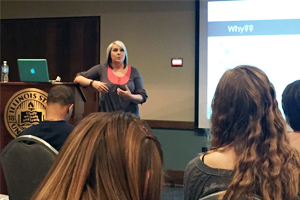How District 214’s Educator Prep Program is Training Teachers Early to Address Shortage
At District 214, participants take a three-year sequence of courses, earn early college credit and get experience co-teaching and supporting teachers in real classrooms. They complete four internship rotations in elementary, middle school, English language learner and special education classrooms at various schools. This year, the Joyce Foundation and Illinois P-20 Council funded 21 school districts to expand and create similar teaching career paths modeled after District 214’s program. Grant recipients include District 214, Plainfield District 202 and Indian Prairie District 204. “One way to build an educator workforce is to help build the program in high schools,” said Stephanie Banchero, education program director for The Joyce Foundation. “District 214 is unique. They do two things that are really smart: help kids get college credit while in high school, (and) they are giving them exposure to the profession. Those are two key components to a very strong pathway.” High school teacher preparation programs also help train people who ultimately might return to work in their communities, Banchero said.
Principal Pipelines: A Feasible, Affordable, and Effective Way for Districts to Improve Schools
Six large school districts that built principal pipelines, a set of measures to cultivate effective school leaders, saw notable, statistically significant benefits for student achievement across their communities, according to this groundbreaking report by RAND. After three years, pipeline-district schools with newly placed principals outperformed comparison schools in other districts by more than 6 percentile points in reading and almost 3 percentile points in math, an unusual accomplishment. “We found no other comprehensive district-wide initiatives with demonstrated positive effects of this magnitude on achievement,” the authors say. The pipelines also led to benefits in principal retention, according to the report. After three years, pipeline districts had nearly eight fewer losses for every 100 newly placed principals than the comparison group. This is significant because principal turnover is disruptive to schools and costly, with districts spending an estimated $75,000 to replace a principal.
Georgetown University Center on Education and the Workforce
Using data from the expanded College Scorecard, this report ranks 4,500 colleges and universities by return on investment. A First Try at ROI: Ranking 4,500 Colleges finds that bachelor’s degrees from private colleges, on average, have higher ROI than degrees from public colleges 40 years after enrollment. Community colleges and many certificate programs have the highest returns in the short term, 10 years after enrollment, though returns from bachelor’s degrees eventually overtake those of most two-year credentials.
Brain Activity Links Performance in Science Reasoning With Conceptual Approach
Understanding how students learn is crucial for helping them succeed. We examined brain function in 107 undergraduate students during a task known to be challenging for many students—physics problem solving—to characterize the underlying neural mechanisms and determine how these support comprehension and proficiency. Further, we applied module analysis to response distributions, defining groups of students who answered by using similar physics conceptions and probed for brain differences linked with different conceptual approaches. We found that integrated executive, attentional, visual motion, and default mode brain systems cooperate to achieve sequential and sustained physics-related cognition. While accuracy alone did not predict brain function, dissociable brain patterns were observed when students solved problems by using different physics conceptions, and increased success was linked to conceptual coherence.

